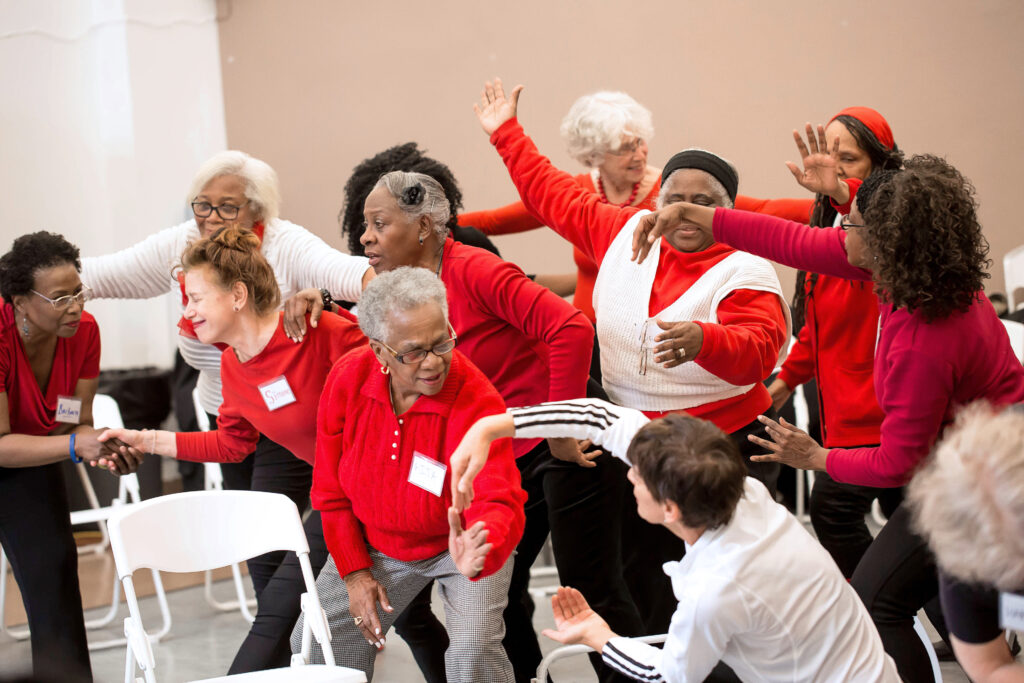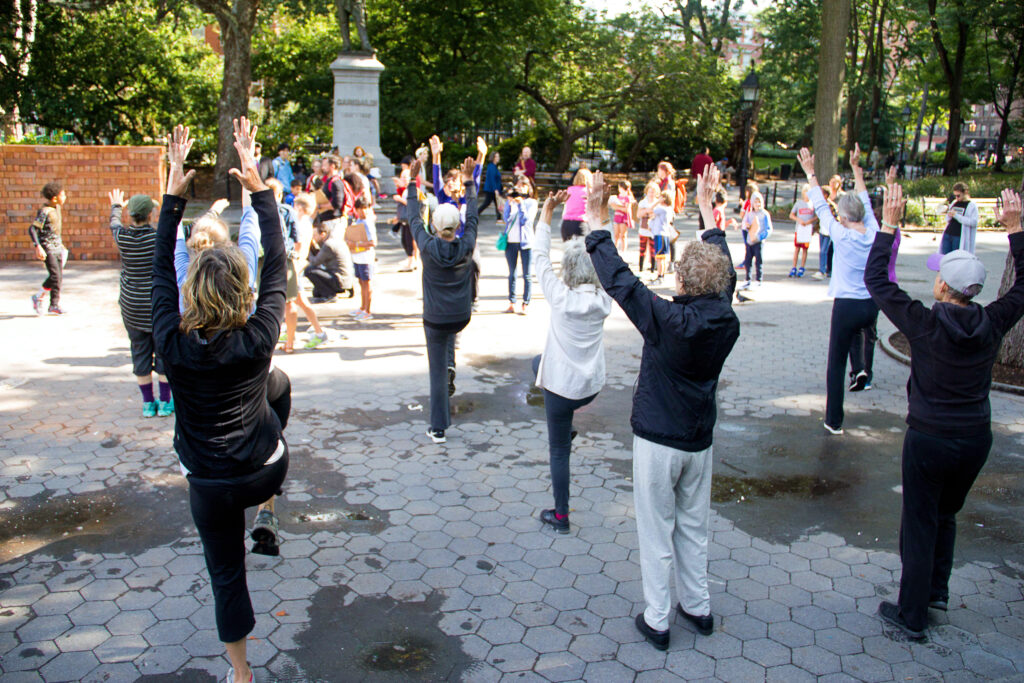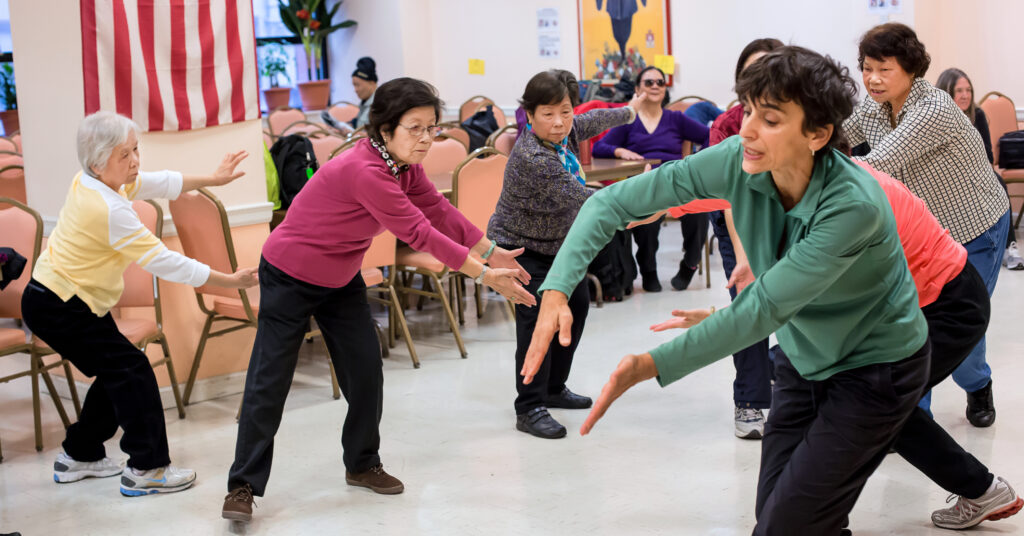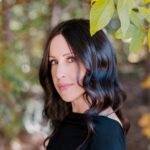
For Naomi Goldberg Haas, dance isn’t just a passion. It’s a priority. “Dance is important for health—for mental health, physical health, emotional health. The principles of dance are simply that important,” she says.
The master teacher, choreographer, and founder of Dances for a Variable Population (DVP) feels that dance is a public-health right, and that it’s absolutely essential—especially for seniors. “It’s important to recognize older adults need to dance. They need to move. It’s good for their health,” she says.

Since DVP’s inception in 2009, Haas and her team of teaching artists have strived to provide safe, empowering creative-movement classes for older adults (usually 55-plus) throughout New York City and online. DVP teaches roughly 1,100 students per month in free classes, called “Movement Speaks,” that are primarily held at dance studios and senior centers. They’ve taught over 5,000 seniors since opening their doors.
“We have classes year-round, at places like Washington Square Park, and in the Bronx near Yankee Stadium,” she says. They’ve also held classes in libraries and transportation hubs. Haas says the outdoor sessions are particularly meaningful to her. “I personally love to dance outside,” she says. “It’s wonderful to just breathe the air and be free to connect with nature, and to connect with other people at the same time.”
Connection is hugely important to Haas. Not only does she continually strive to help her students use their bodies to build creativity and to help boost physical and mental abilities, but also to strengthen social connections.

All Movement Speaks classes have two teachers—a choice Haas says is very intentional. “I believe in the partnership and having both teachers working together, demonstrating how to work together,” she says. “Then, the students have to collaborate.”
What makes DVP unique is its inclusivity. People of all abilities are welcomed and encouraged to move in any way they can. “Some dancers need walkers and some have full flexibility. But we want them to be able to participate at the same level,” says Haas. “So if they get tired, they can take a break.”
Before the 75-minute classes end, Haas says they wrap up with a creative exercise—teachers ask students to move in a certain way, or give prompts to move in similar or contrasting dynamics. “They have to use certain structures of choreography—to use a certain special formation in a line or a circle.” Ending class this way gives the students a chance to be seen, Haas explains, as creative individuals: “It’s an opportunity to extend yourself. To be open to change, to adaptation.”
It’s not surprising that her championing of dance for older adults has led to numerous accolades. Haas was awarded a Dance/USA Fellowship for artists whose work addresses social change. In February, she received the New York State Dance Education Association Lifetime Impact in Dance Education award.

Dance is hardwired in Hass. She began her career with the Pacific Northwest Ballet, then moved back to New York City, where she majored in performing arts with a dance concentration at Barnard College. After graduation, she was West Coast–bound again, this time to study with legendary contact improvisation guru Martin Keogh, in San Francisco. From there, she performed independently throughout California at comedy clubs and alternative spaces, formed a mixed-ability dance company, and worked as a substitute teacher. She later returned to New York and obtained her MFA from New York University’s Tisch School of the Arts.
As for the future of Movement Speaks, Haas has begun incorporating hip hop, flamenco, and salsa into her classes, exposing her students to an even greater variety of movement. She also hopes that dance education will become more diversified—moving towards a greater acceptance of all bodies and abilities. “Accept your body as it is and go from there,” she says with a smile.
For those who wish DVP would open up in other cities and communities beyond New York City, Haas would love to expand. In the meantime, she welcomes inquires from those who want to learn the DVP methodologies and understand how important it is for seniors to move, to be creative, and to thrive. “The idea of creative movement is to be universal,” she says. “We can teach those who are interested, and they can go off on their own.”





